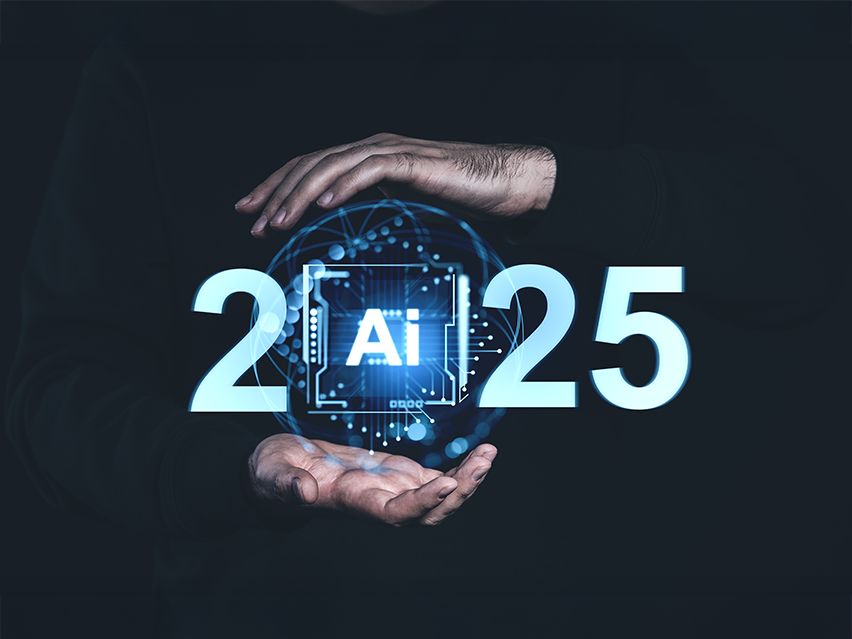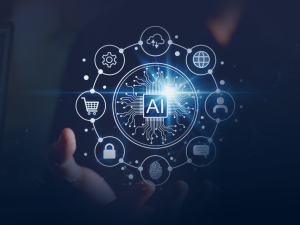The future of software is not arriving in a grand reveal. It is showing up in pull requests, sprint plans, and the shift in how teams build and deliver. Tech trend timelines are much shorter; a new thing comes in even before the last one maximizes its time on the infinite scroll. Some trends last longer, get adopted into workflows and we can’t imagine not having lived with it. Meanwhile, some go viral, get dismissed as too basic, and then slowly get adopted by everyone.
In 2025 some trends feel more like natural progressions than disruptions. Others are redefining what software engineering even means.
At Gateway Group, we’re not chasing the newest ideas. We’re building around the ones that have staying power, those that solve real problems, streamline delivery, and create lasting value for our partners. Here’s a closer look at where we’re focusing our attention, and why these shifts matter.
Tech Trends 2025
- Platform engineering is creating room for real velocity
Developer experience isn’t just about good tooling anymore. It’s about creating internal systems that let teams ship faster without sacrificing reliability. Platform engineering is helping product teams focus on solving business problems by giving them ready access to everything from environment provisioning to observability stacks.
We’ve seen the payoff in large-scale engagements where multiple products need to be built in parallel. Reusable infrastructure components and self-service pipelines have helped teams cut delivery time without increasing load on DevOps. In 2025, we expect this approach to become foundational, not just for scaleups, but also for enterprises looking to modernize.
- AI-assisted software development is becoming real
Large language models have found their way into the engineering workflow, and while the hype has cooled, the value is getting clearer. Tools that once generated code snippets are now helping teams debug, refactor, and even enforce coding standards.
We’re seeing this in our own R&D environment, where AI is assisting in early-stage prototyping and improving code review cycles. It’s not a replacement for engineering skill, but a way to reduce cognitive load so teams can focus on architecture and design decisions. The future here lies in integration, not disruption.
- Event-driven architecture is scaling up responsiveness
As software becomes more distributed and real-time, event-driven models are taking on new importance. Whether it’s streamlining order fulfilment in retail or enabling instant alerts in healthcare platforms, this architectural shift is helping systems react faster and scale more predictably.
We’re investing in this through event mesh strategies that support both cloud-native and hybrid applications. What we’ve noticed is that the success of event-driven design isn’t just about messaging tools. It’s about designing with decoupling in mind from the start.
- Sustainability in software is no longer optional
Green software is moving from the sidelines to early-stage architecture discussions. Energy-efficient computing, carbon-aware coding practices, and smarter workload distribution are becoming part of how modern engineering teams think about scale.
In client conversations, especially in regions with strong regulatory focus, this is already a consideration during platform builds. We’re integrating sustainable design principles into our delivery playbooks, helping teams make better choices without adding complexity.
What this all points to
The trends that matter most in 2025 aren’t always the ones grabbing headlines. They are the ones shaping the daily work of building good software. They bring clarity, speed, and resilience. And most importantly, they let teams focus on what truly matters: solving the right problems well.
That’s the future of software we’re leaning into. One decision, one improvement, one release at a time. Today in tech we are living in the future we are creating in our present, the planning to execution to adoption timeline is that short.
Explore further
Discover more Articles and stay in the know.




